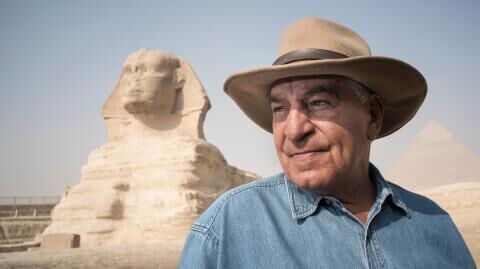The archaeological park of Pompeii, the Roman city that was buried by a volcano eruption nearly 2,000 years ago, revealed new treasures discovered during the latest excavation, which include a number of intriguing amulets.
Discover our latest podcast
Hidden treasures
Inside a box, archaeologists discovered dozens of amulets, rings, statuettes, and lucky charms made of ivory, bronze, ceramic, and amber. Apparently, they weren't enough to protect the ancient city from the fury of the Vesuvius, which is said to have come down on the city in October of 79 AD, six months later than was previously reported.
Massimo Osanna, director of the Pompeii Archaeological Park, told AFP:
It is one of the most curious things that we have discovered in our searches: amulets that seem to have belonged to a woman or a man who resorted to magic.
He made this statement at the inauguration of the Antiquarium, the renovated museum in which bronze statues, frescoes, and gold and silver jewelry are displayed... Only a third of the park, which currently spreads over 44 hectares, not far from Naples, has been dug up by archaeologists.
Mr. Osanna stressed:
Here are some of the most important objects discovered since the 19th century. The Antiquarium transports you through centuries of Pompeii history, until the fatal day of the eruption.
According to him, the part of the museum that tells the story of the city's last days is its 'most impressive section.'
A fast-food street stall was unearthed
Massimo Osanna, who has been in charge of Pompeii since 2014, oversaw a major renovation project funded largely by the European Union, which brought the Unesco World Heritage Site back to life, but, it was, unfortunately, poorly maintained and deteriorating at a disturbing rate. In December, archaeologists announced an exceptional discovery: a thermopolium, a kind ancient Roman fast-food street stall that was decorated with polychrome patterns and exceptionally well-preserved. The bar, which was petrified by volcanic ash was located in a very busy neighbourhood, at the intersection of the alley of the Balcones and Silver Wedding street.
In addition to a well-known fresco that depicts a Nereid (sea nymph) on a horse, researchers found illustrations of animals, more precisely poultry and mallard ducks that were likely paired with wine or hot drinks, painted in bright colours. And most importantly, scientists found food scraps that provided them with valuable information on what the inhabitants of Pompeii ate at the time of the eruption of Vesuvius, in 79 AD. A fragment of duck bone, as well as pork, goat, fish. and snail remains were retrieved from terracotta pots. Several of these ingredients were cooked together, much like a paella.
The lost city was hit by COVID too
Like most Italian cultural sites, Pompeii has been closed for several months due to the COVID-19 pandemic. It was reopened on January 18, but there's hardly been anyone there. On average, the park has had less than a hundred visitors per day, as opposed to its previous daily average of 8,000 visitors.
Mr. Osanna said, adding that the site benefited from subsidies from the Ministry of Culture to compensate for this drop in income:
We have lost 80% of our visitors, and, therefore, 80% of our box office income.
On Monday, the park was almost empty, except for a few journalists who came for the inauguration of the museum, archaeologists, and guards on duty, as well as guides waiting around for tourists who never showed up.
In 2019, Pompeii welcomed more than 3.9 million visitors, making it the third most visited place in Italy after the Colosseum in Rome and the Uffizi Museum in Florence. According to Massimo Osanna, this is an exceptional time to visit Pompeii:
It is almost as if one could see the soul of Pompeii, his spirit. It is an abandoned city, and seeing it without tourists perhaps makes one think more about the horrible catastrophe that cut short lives here and that reduced to silence a vibrant place of life.















